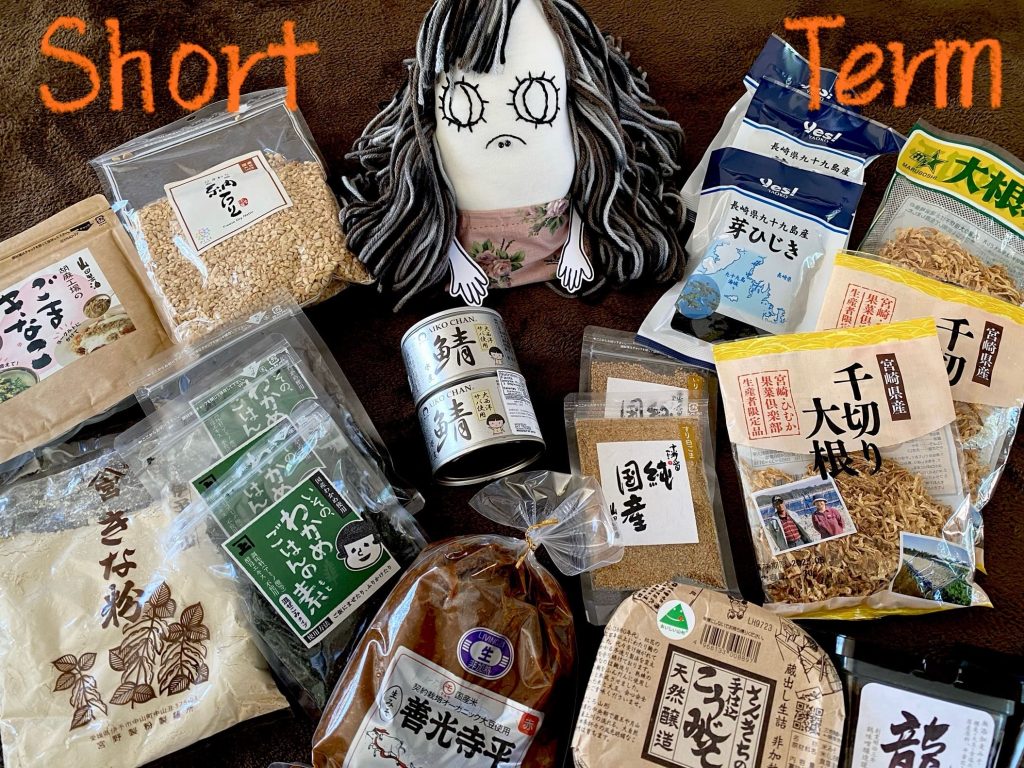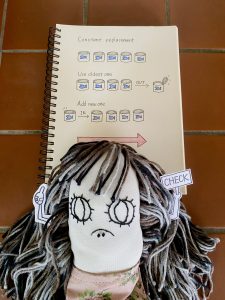
Which foods should you get for your short-term emergency stockpile?
I just need to buy lots of extra food; food which I normally eat every day. Is that right?
I got lots of dry food from the emergency supply store.
I can eat the food from my short-term emergency stockpile, right?
When you start preparing your emergency stockpile, you might think to check special stores, and you might look specifically for emergency food.
That is OK, but you might end up getting unfamiliar food, which will go to waste, later.
Please do not overthink it; it doesn’t need to be perfect.
You can prepare your short-term emergency stockpile in the same way that you get your normal, daily food. You don’t need to rush out to get food (unless your fridge is completely empty, then by all means…). You need to get used to buying “lucky food (post #43),” and to doing “first in, first out (post #42),” little by little.
Take it slow. Ultimately, I want you to feel, “I am OK!”
💡
You just need to buy the same food you normally buy, but get a little extra.
As you know, Japan has had many disasters over the years, and many Japanese people have had to evacuate to emergency shelters. Some people were able to stay in their own homes, but without power and water. We can learn from their experience. Let’s look at what they went through, and think about how we can prepare for future emergencies. Many new emergency foods were inspired by the stories of Japanese survivors.
If you have the opportunity to visit to Japan,
I recommend you get some of the emergency food and supplies from over there, to bring back.
I have some of these Japanese foods, and I could even get some of them here, in the U.S.
Yes! Cup O’ Noodles! But it’s not only noodles.
Nowadays, you can get other kinds of Japanese food, over the internet, for your emergency stockpile. Living here in the U.S., I am limited in my ability to set up my emergency stockpile with exclusively Japanese food. (This list will reveal just how Japanese I am.) This is the list of food I stocked up on for my short-term stockpile. Some food for the short-term stockpile is duplicated from the long-term stockpile. So, please check past blogs.
Food items in my short-term stockpile (including some non-Japanese items):
1. Water #4 / #5 / #6 / #7 / #8 / #10
2. Rice #22
3. Salt #28
4. Miso #34
5. Sugar #29
6. Soy sauce #31
7. Vinegar #32
8. Honey #30
9. Alcohol #33
10. Pasta and noodles (Cup O’ Noodles) #25
11. Flour #24
12. Umeboshi (pickled plum) #35
13. Kiri mochi #23
14. Dry foods (soy beans / azuki beans / seaweed / shiitake / soup/ natto / fruit / nuts) #26
15. Canned food (fish / beans / meat) #27
16. Glass jar food (peanut butter / strawberry jam)
17. Spices and seasoning (Furikake)
18. Oatmeal
19. Sweet snacks (chocolate / cookies / candy / yokan)
20. Oil
21. Potatoes (sweet potato)
22. Coffee and green tea
23. Frozen foods
24. Ready-to-eat foods
My food list looks like I’m just telling you about the food I eat, daily. But my family will want to eat this food after a disaster. And I want to maintain our normal routine and diet, as much as possible.
After a disaster, everybody will be feeling anxious. If we can eat familiar food during the emergency, it will help ease our anxiety.
On the other hand, if we eat special, emergency food, we might feel heavy. We will feel the weight of the disaster upon our shoulders.
I know it’s good to have special, emergency food, but personally,
I would prefer to eat my normal, familiar food instead.
You just need to buy the same food you normally buy, but get a little extra. Pick up the food that you and your family are used to eating.
Do not make “ZERO” stock in your stockpile. In other words, always restock at least a little bit, before you use the last of something.
Always follow this↓

Next post, I will go into more detail about the kinds of Japanese food I have in my short-term stockpile.
See you next time.
Remember, “Protecting your life by yourself“(自分の命は自分で守る). You need to survive first, and then you need your emergency supply. No matter how well you prepared your emergency supplies, if you die, then it will have been all for nothing. First and foremost, keep your health up all the time, and build your stamina so you can evacuate as quickly as possible, if you need to. Stay healthy.